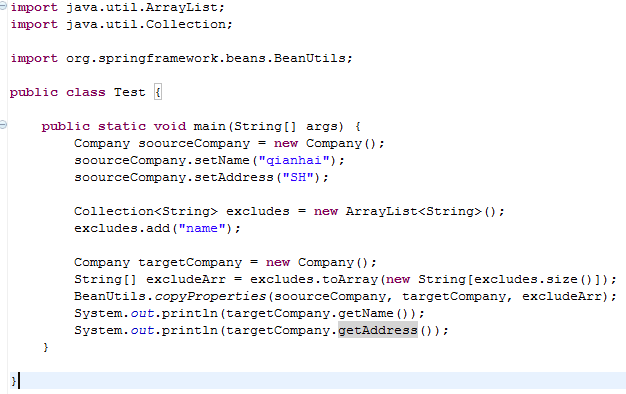通過HttpClient請求webService
1 | <soap:Envelope xmlns:soap="http://www.w3.org/2003/05/soap-envelope"xmlns:sam="http://user.service.xxx.com"> |
2 | <soap:Header/> |
3 | <soap:Body> |
4 | <sam:getUserInfo> |
5 | <sam:userName>sunlightcs</sam:userName> |
6 | </sam:getUserInfo> |
7 | </soap:Body> |
8 | </soap:Envelope> |
01 | import java.io.IOException; |
02 | import java.io.OutputStream; |
03 | import java.io.OutputStreamWriter; |
04 | import java.io.Writer; |
05 |
06 | import org.apache.http.HttpResponse; |
07 | import org.apache.http.client.HttpClient; |
08 | import org.apache.http.client.methods.HttpPost; |
09 | import org.apache.http.entity.ContentProducer; |
10 | import org.apache.http.entity.EntityTemplate; |
11 | import org.apache.http.impl.client.DefaultHttpClient; |
12 | import org.apache.http.util.EntityUtils; |
13 |
14 |
15 | public class ClientTest { |
16 |
17 | public static void main(String[] args) { |
18 | ClientTest.httpClientPost(); |
19 | } |
20 | |
21 | private static void httpClientPost() { |
22 | HttpClient client = new DefaultHttpClient(); |
23 | HttpPost post = newHttpPost("http://localhost:8080/xxx/services/userService"); |
24 | |
25 | try { |
26 | ContentProducer cp = new ContentProducer() { |
27 | public void writeTo(OutputStream outstream) throwsIOException { |
28 | Writer writer = new OutputStreamWriter(outstream,"UTF-8"); |
29 | |
30 | /** |
31 | * 獲取請求的xml格式數據 |
32 | */ |
33 | String requestXml = getRequestXml(); |
34 | writer.write(requestXml); |
35 | writer.flush(); |
36 | } |
37 | }; |
38 |
39 | post.setEntity(new EntityTemplate(cp)); |
40 | HttpResponse response = client.execute(post); |
41 | |
42 | //打印返回的xml數據 |
43 | System.out.println(EntityUtils.toString(response.getEntity())); |
44 | } catch (IOException e) { |
45 | e.printStackTrace(); |
46 | } |
47 | } |
48 | |
49 | |
50 | private static String getRequestXml(){ |
51 | StringBuilder sb = new StringBuilder("<soap:Envelope xmlns:soap=\"http://www.w3.org/2003/05/soap-envelope\" xmlns:sam=\"http://user.service.xxx.com\">"); |
52 | sb.append("<soap:Header/>"); |
53 | sb.append("<soap:Body>"); |
54 | sb.append("<sam:getUserInfo>"); |
55 | sb.append("<sam:userName>sunlightcs</sam:userName>"); |
56 | sb.append("</sam:getUserInfo>"); |
57 | sb.append("</soap:Body>"); |
58 | sb.append("</soap:Envelope>"); |
59 | |
60 | return sb.toString(); |
61 | } |
62 |
63 | } |
返回的數據格式如下:
1 | <?xml version='1.0' encoding='UTF-8'?> |
2 | <soapenv:Envelope xmlns:soapenv="http://www.w3.org/2003/05/soap-envelope"> |
3 | <soapenv:Body> |
4 | <ns:getUserInfoResponse xmlns:ns="http://user.service.xxx.com"> |
5 | <ns:return>xxx</ns:return> |
6 | </ns:getUserInfoResponse> |
7 | </soapenv:Body> |
8 | </soapenv:Envelope> |
posted @ 2017-05-24 16:10 朱杰兵 閱讀(1219) | 評論 (0) | 編輯 收藏


